Stromant and its cultivation at home

For home cultivation, most gardeners choose a plant such as stromant - an elegant and perennial crop that is distinguished by beautiful foliage and unpretentious growing conditions.
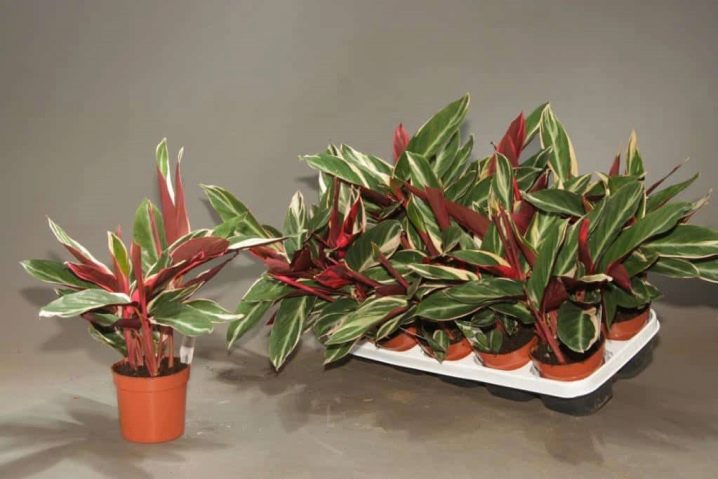
Description
Stromanta is a fairly popular indoor flower that tolerates heat and high humidity well. The leaves of the plant often do not exceed 45-50 cm, they are distinguished by a beautiful shade and rich colors - from slightly pinkish to green. Due to these features, the flower is great for growing in the interior of any design or style. Blooming at home is a relatively rare occurrence. Bright red flowers are only seen when the crop is growing in the wild or in the garden. Plant height varies from 1.5 to 2.5 m.
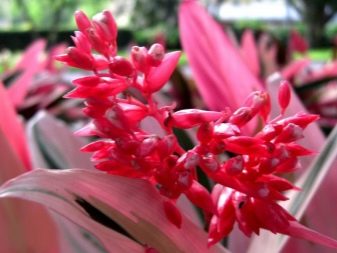
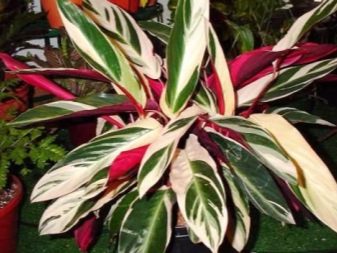
Types and varieties
Despite the fact that the genus Stromant includes about 13 varieties, two varieties are popular: pleasant and blood red... These species are widely used in indoor cultivation.
Pleasant stromanta is a rather compact plant, the height of which varies from 15 to 35 cm. The foliage of the variety is distinguished by long oval or ovoid petioles. The sizes of individual leaves are 20-25 cm. A distinctive feature of the variety is its unique color - the culture can be emerald, light green and green shades.
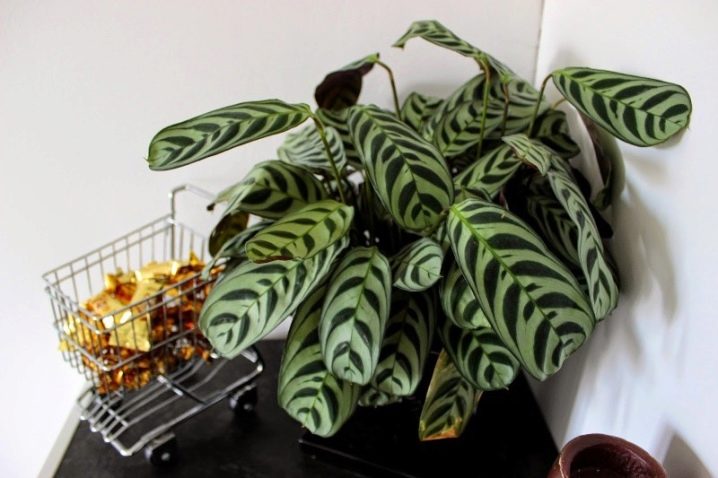
The foliage of the pleasant stromant is distinguished by a large number of small veins, which are arranged in the form of a Christmas tree. Due to the unique ornament, the flower can be recognized quite quickly. The front of the leaves is often much more beautiful than the back. The lower region is characterized by a grayish or greenish tint.
Blood red stromanta is a tropical plant that grows wild in the forests of Brazil. A feature of the variety are large elliptical leaves, slightly pointed upwards. With proper care, the variety reaches a height of 40-50 cm.The foliage ornament is made in the form of the Latin letter V.
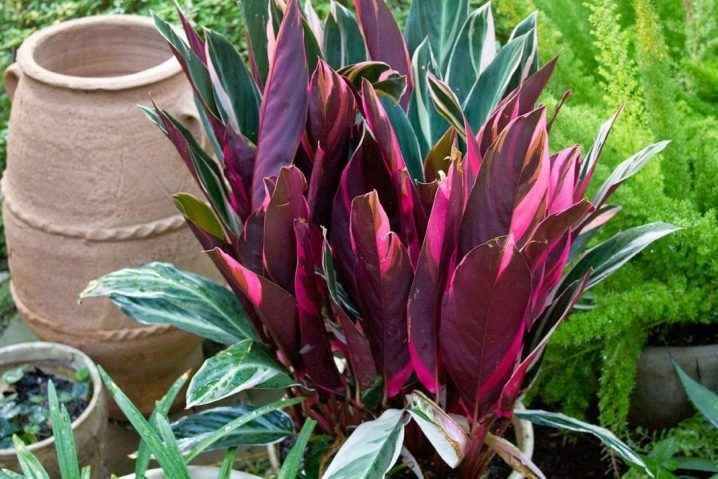
Scientists were able to develop several varieties from the blood-red type of plant.
- "Triostar" or "Tricolor". The foliage is pinkish, green and white.
- "Multicolor". A distinctive feature is burgundy blotches in the form of spots and dark green stripes in the central part of the leaves.
- "Maroon". White or gray veins in the center of the foliage, giving off a greenish tint. Usually grown as a separate crop.
- "Horticolor". It is characterized by a large number of leaf spots that can be green, yellow or olive.
- "Stripe Star". Bright green foliage with a light stripe along the central vein. Differs in high color saturation.


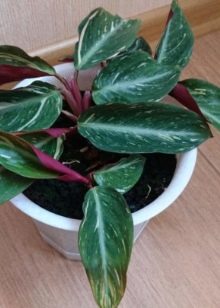
The varieties described above are great for indoor growing. Despite the rather capricious nature, the plants take root well in the urban environment. The main thing is to choose the right variety depending on the growing conditions.
Landing
For a plant a deep pot with solid walls is used, which allows you to get rid of certain problems observed during the growth of the root system.
For growing a plant, a humus loose earth is suitable, which passes moisture and air well. The soil should also be slightly acidic - approximately pH 6.
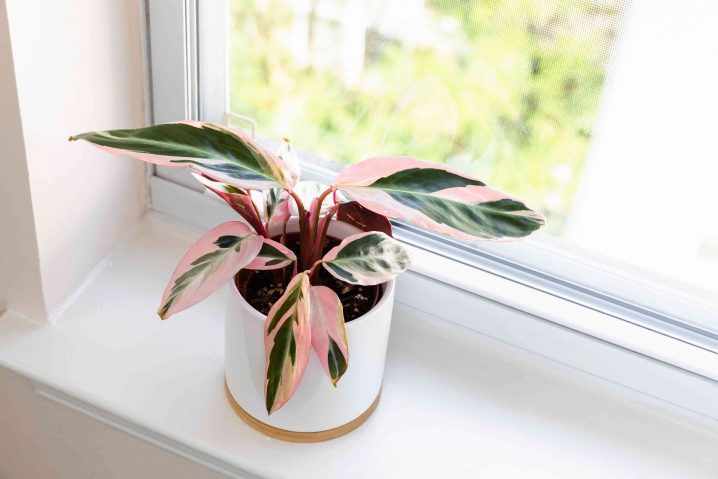
Care
Although it is not difficult to care for the stromant, the gardener must adhere to certain rules regarding temperature, illumination, irrigation and fertilization rules. It is also important to know how to properly transplant a young plant.
Following the recommendations below will help you avoid most of the popular mistakes that the vast majority of both beginners and more experienced gardeners face.
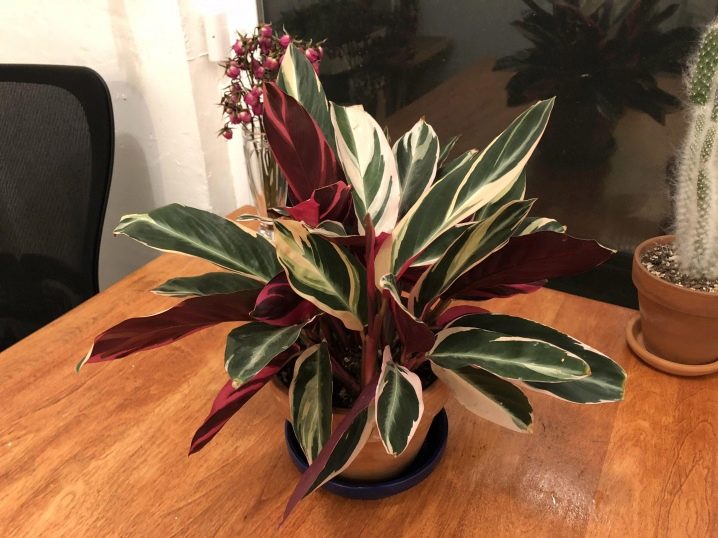
Conditions
The first thing you need to pay attention to when growing a plant at home is temperature and lighting. It is better to keep the temperature around 22-25 ° C in summer, and at least 18 ° C in winter. Any type of indoor plant is susceptible to sudden changes in temperature and drafts.
Based on the above features, it is necessary to ensure that there are no constant air flows in the room. Stromanta is also sensitive to low humidity in the apartment, due to which it can quickly die.
In winter, the plant should not be placed too close to the glass. For constant growth, window sills, which are located on the west or east side, are excellent. If the crop is located in the south, it should be provided with good shade to avoid direct sunlight. In this case, the lack of scattered light entails the creation of a monochromatic color.
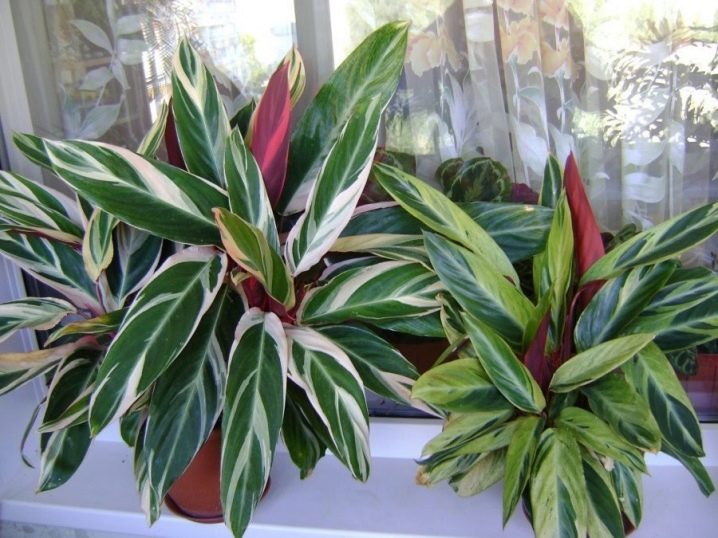
Watering
Watering the plant or moistening the root system is necessary exclusively with settled clean water, the temperature of which is as close to room temperature as possible. In summer and spring, watering is usually more active than in winter or autumn.
A distinctive feature of bred varieties and classic varieties is the love of high humidity. To maintain good humidity, experts recommend spraying the bush from a spray bottle from time to time. You can also add a small amount of pebbles, expanded clay or crushed stone to the pallet with the pot.
Around the growing vessel, the grower can neatly lay moss, which is additionally moistened several times a week.
It is also worth noting that the flower needs periodic spraying with warm water.
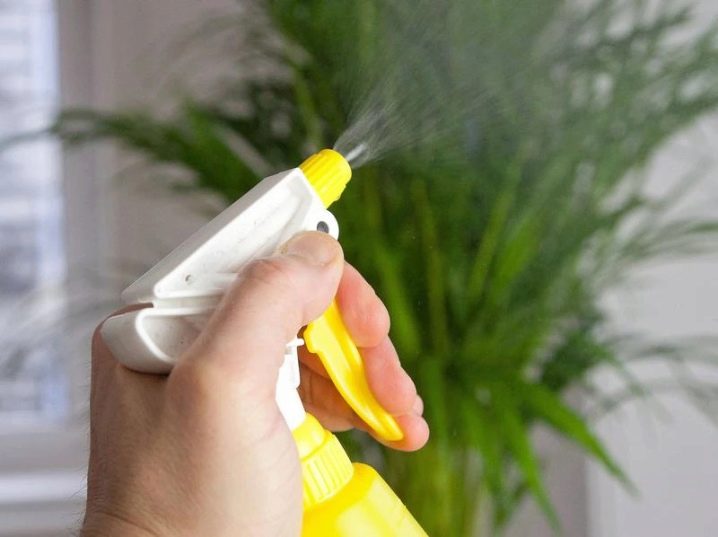
Top dressing
In most cases, the plant needs to be fed during the growing season - from mid-May to late August. As a fertilizer, it is recommended to use a self-prepared nutrient solution based on dressings for decorative soil crops. Stromant is fertilized 1-2 times every 2-3 weeks, depending on the varietal variety.
In the process of feeding, it must be remembered that too much added mineral mixtures or calcium negatively affects the further development of the culture.
Experts note that underfeeding is always better than overfeeding a plant.

Transfer
Indoor plant varieties are usually replanted in the last days of spring. This process is carried out regularly and annually, which allows for the renewal of the root and stem systems. Experts recommend transplanting an adult stromant once every 2-3 years, depending on the external conditions and structural features of the flower.
In order to avoid damage to the root system of the plant during transplantation, it is necessary to use the transshipment method - this is a method in which the root ball is not disturbed. The resulting gaps in the soil mixture after transplanting must be filled with fresh soil.
Recommended substrate composition: sand, peat, humus and leaves of old plants. In addition to preparing the soil yourself, you can purchase it in a specialized store. In this case, it is recommended to buy a soil mixture that is used for growing arrowroot or palm trees.
Regardless of the chosen soil, it is necessary to add a small amount of small pieces of moss and charcoal to it, which will better retain moisture and avoid damage to the root system.
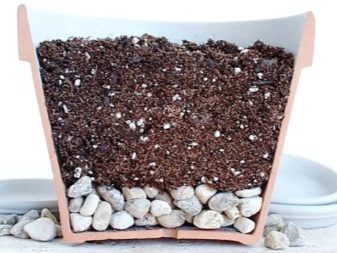
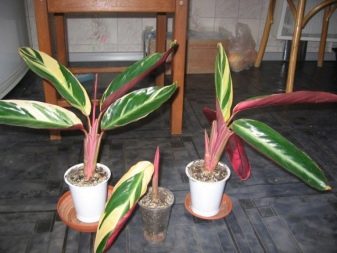
Before replanting the plant, it is recommended to lay a thin drainage layer on the bottom of the pot - approximately 25% of the height of the entire vessel.
Pruning
Pruning a plant is a simple process that any gardener can handle. This culture is characterized by unpretentiousness to care, therefore only damaged or dried leaves are cut off. Despite the fact that the stromant is a bush, it does not need additional crown formation.
During the pruning process, certain hygiene rules must be followed. This action is carried out with clean tools and gloves. It is also recommended to carry out additional disinfection. Slices are made exclusively at a beveled angle, slightly above the kidneys. Pruning is best done early in vegetative growth.
The main pruning tools are specialized pruning shears and scissors. Bonsai scissors can be used to pinch the bush. Regardless of the tools used, they must be sharpened in a timely manner and kept clean.
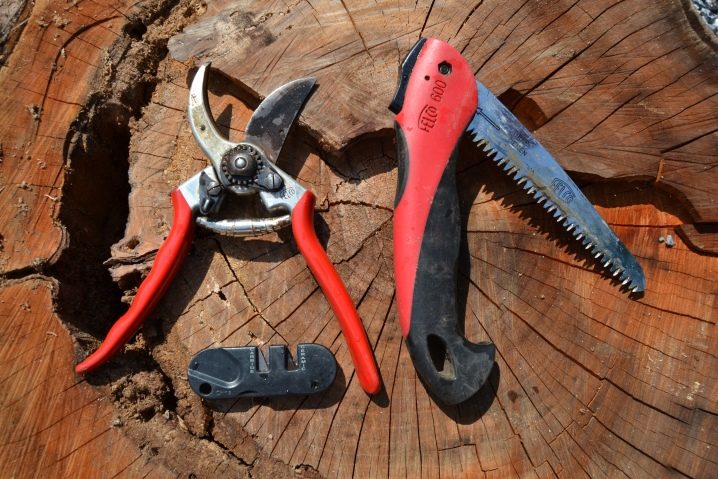
Dormant period
In autumn, the flower usually enters a so-called dormant period, the duration of which is 2-3 months, depending on the cultivar or variety. Unlike other plants stromant does not differ in pronounced changes.
During the dormant period, the plant does not need additional fertilizing or fertilization. However, experts recommend reducing the intensity and frequency of watering. The temperature regime in the room should be kept in the region of 20-22 ° C.
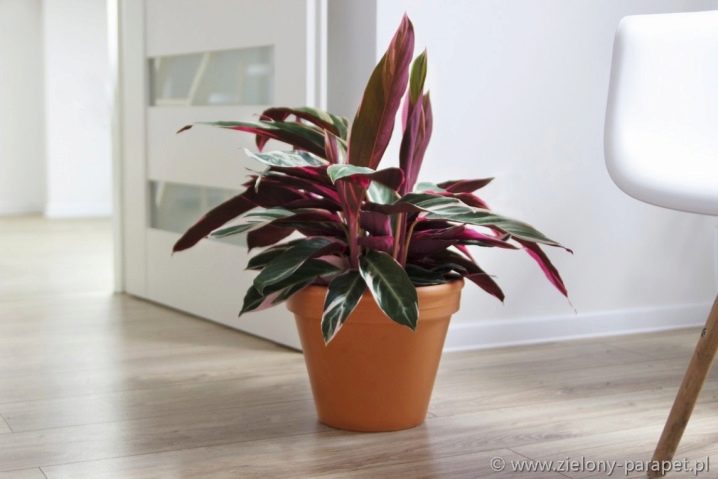
Reproduction
In the process of flowering, the plant forms small inflorescences with a diameter of 60 to 90 mm, depending on the varietal variety. They include a large number of opaque red flowers. Peduncles are usually long. Despite this feature, when grown at home, the plant blooms quite rarely.
To propagate a culture, you must use one of the following methods.
- Division of the bush. In this case, the bush should be divided into two or three equal parts, and then planted in a slightly moist soil. After that, you need to wait a certain amount of time for the adaptation of the bushes. Then the soil is watered, the leaves are gradually moistened. It is recommended to divide the bush in March-April.
The planted plant should be placed in a well-lit and warm place. Before the appearance of the first leaves, it is important to cover the culture with polyethylene.
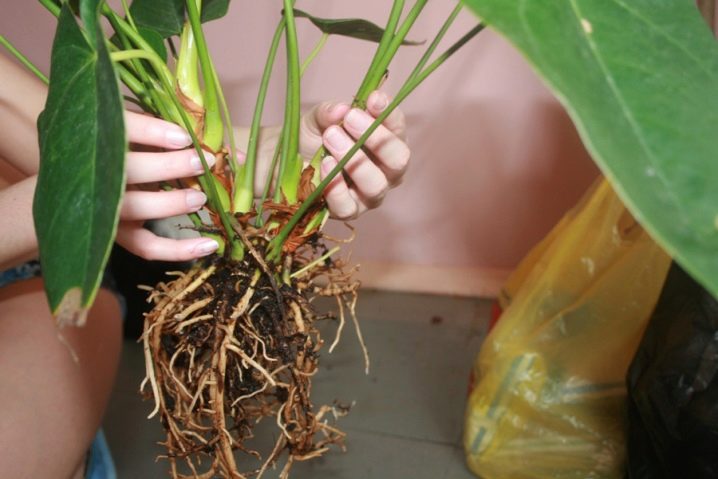
- Rooting cuttings... This process is usually performed during the summer or spring season. To do this, you need to cut off the tops of 2-3 shoots with a clean blade. Next, the stalk is set in water and covered with a glass jar or polyethylene.
In order for the roots to sprout quickly, a certain humidity and temperature conditions must be maintained.
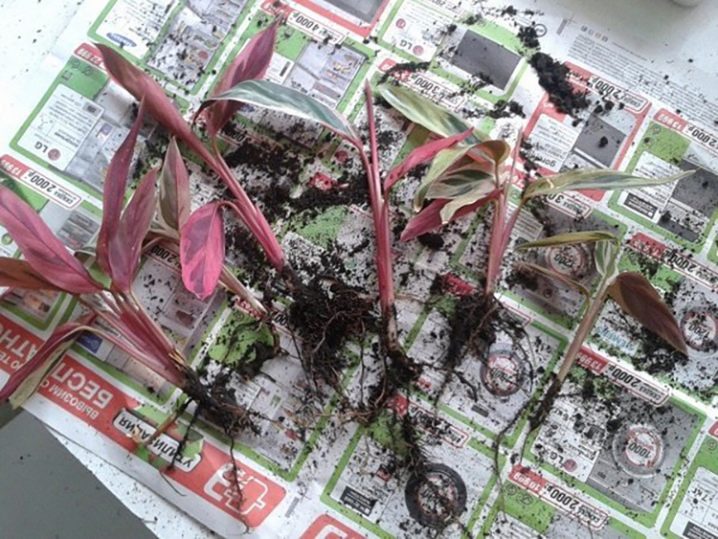
- Seeds... The seed propagation method is usually not used by gardeners due to the time and effort involved. Its use does not provide any guarantees that the plant will begin to germinate quickly.
Regardless of the chosen breeding method, experts recommend using the soil, the constituent elements of which are sand, humus and peat mixture.
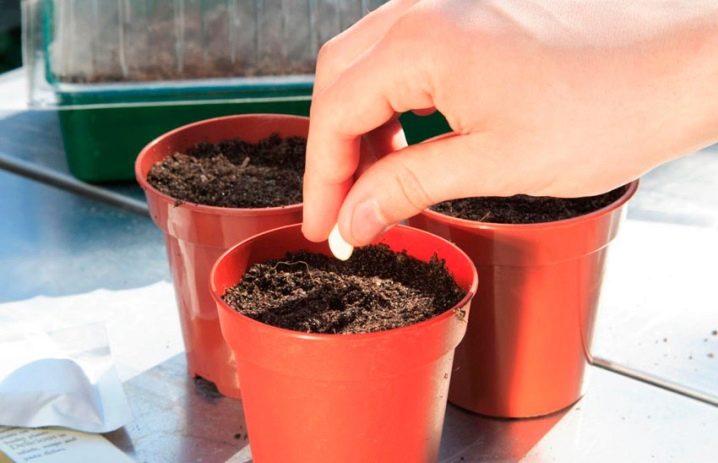
Diseases and pests
An indoor plant is often exposed to various diseases and pests. To save a culture from extinction, it is necessary to adhere to certain rules and basic care guidelines.
- Mealybug. The pest often twists the leaves of the plant and leads to the formation of a white bloom. Alcohol is commonly used to control mealy worms. This substance is used to wipe the trunk and foliage.
- Shield... Infection is characterized by the formation of a sticky coating on the leaves of the plant with small brown tubercles. To eliminate the pest, you should wash the foliage with a soapy solution.
- Spider mite. In this case, yellow spots are observed on the leaves. To eliminate the pest or prevent its further development, damaged leaves must be cut off in time. After that, the plant is processed with specialized products "Actellik" and "Derris".
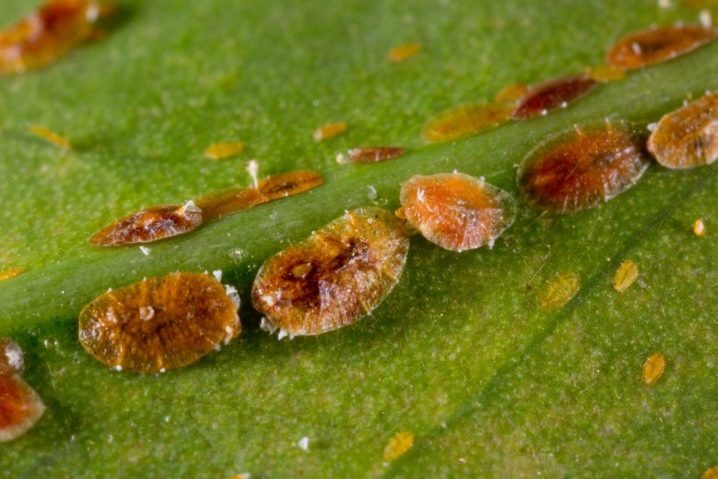
If the leaves dry out quite often and the stem becomes sluggish, you should raise the room temperature and increase the humidity. A similar symptom is also a consequence of improperly administered fertilizer.
In the event that the leaves dry at the edges, you should revise the mode of watering and spraying the foliage. If the tips of the leaves dry, it is necessary to additionally moisten the soil and add mineral fertilizing.
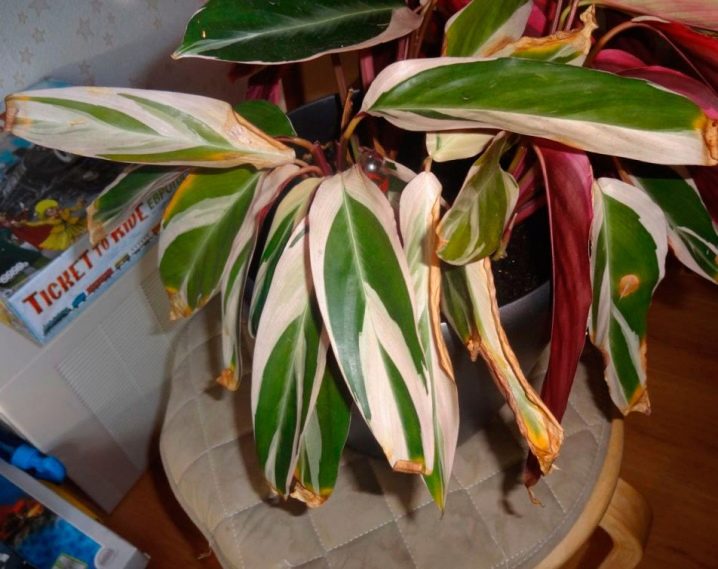
























The comment was sent successfully.